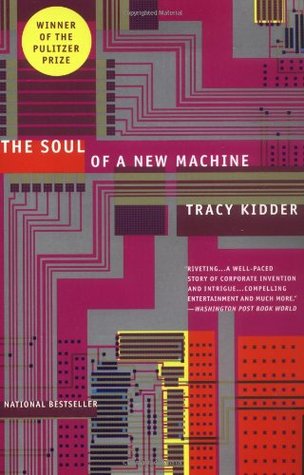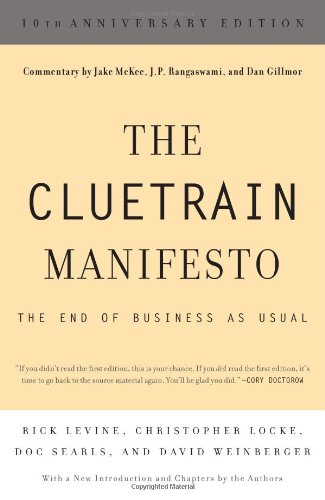5 Marketing and Creativity Books That Stand the Test of Time
Posted in: Uncategorized

I recently cleaned out my Mullen office after 31 years at the agency and lugged my remaining books to my new office at Boston University. When I shared a photo of the transition, someone asked which of the many marketing and creativity books I'd collected over the years still held up.
So I made a list.
It doesn't include many of the more recent hits; it's too soon to tell if they'll truly hold up. So no Malcolm Gladwell or Clay Shirky or Steven Johnson. Nor does it include many of my personal favorites (Helmut Krone, The Book or D&AD's The Copy Book). I excluded others that I’d recommend you read (Ken Segall’s Insanely Simple or Ken Auletta's Googled). Why leave them out? Because the question was quite specific.
So here's the answer: five marketing/creative books that have stood the test of time.
1. A Technique for Producing Ideas, James Webb Young (1965)
 This 48-page gem was published in 1965, and written, I believe, 20 years earlier. There is no better advice for understanding where creative ideas come from and how to generate them.
This 48-page gem was published in 1965, and written, I believe, 20 years earlier. There is no better advice for understanding where creative ideas come from and how to generate them.
The art of producing ideas has nothing to do with luck, serendipity or the shower. It's not about where you go to look for them; it's a matter of "how you train your mind in the method by which all ideas are produced." Once you understand that an idea is nothing more or less than a new combination of old elements, that you can learn to create combinations and collisions, and that the process involves both an active and passive mode, you're on your way.
2. The Soul of a New Machine, Tracy Kidder (1981)
 It's not book about marketing per se, but it is a book about innovation.
It's not book about marketing per se, but it is a book about innovation.
I worked at Data General during the years that Tom West's engineering team was racing the calendar to develop a faster machine to compete against Digital Equipment Corporation's VAX in the emerging 32-bit minicomputer market. Kidder, who was embedded in the company chronicling the team's round-the-clock efforts, tells the compelling story of what happens when you abandon top-down management and instead inspire creativity and innovation from below.
The engineers in the basement of DG never worked for the money. They worked for the challenge of inventing and creating something new. The lessons—speed, collaboration, freedom, and project management—are still relevant for any fast-paced creative organization striving to invent anything new and motivate people to do so.
3. Bill Bernbach's Book, Bob Levenson (1987)
 I bought this book the day it came out 27 years ago. Within hours I had devoured every chapter, every ad, every Bernbach quote.
I bought this book the day it came out 27 years ago. Within hours I had devoured every chapter, every ad, every Bernbach quote.
Even then, ads featured in the book were 20 years old. But the thinking was as fresh as could be and in many ways remains so. Many of Bernbach's quotes could have been written for the digital age and social media.
A few of my favorites: "To succeed, a brand (or a person or product, for that matter) must establish its own unique personality, or it will never be noticed." "The only difference between the forgettable and the enduring is artistry." "If you stand for something, you will always find some people for you and some against you. If you stand for nothing, you will find nobody against you and nobody for you." I still go back to Bernbach for inspiration.
4. The Book of Gossage, Howard Gossage, edited by Bruce Bendinger (1995)
 "Nobody reads ads. People read what interests them, and sometimes it's an ad." I heard Jim Mullen use a version of that line many times and always thought it was his until I picked up The Book of Gossage.
"Nobody reads ads. People read what interests them, and sometimes it's an ad." I heard Jim Mullen use a version of that line many times and always thought it was his until I picked up The Book of Gossage.
It was given to me by a planner who said, "Jeff Goodby swears by Gossage’s thinking." It was the 1960s when Gossage criticized the industry for talking "advertisingese." Instead he suggested having conversations with people, even if in those days it simply meant a coupon.
More importantly he espoused being interesting. Relentlessly pounding people with the same message over and over made no sense to him. If it's interesting, people will remember it. If it's not, no number of forced exposures would make up for the shortcomings. The idea of involving readers and being interesting: Now there are two ideas that hold up.
5. The Cluetrain Manifesto, Rick Levine, Christopher Locke, David "Doc" Searls, David Weinberger (2000)
 Go back and read it. Fourteen years ago it predicted and explained much of what has happened since. A number of the original 95 theses ring perfectly true today.
Go back and read it. Fourteen years ago it predicted and explained much of what has happened since. A number of the original 95 theses ring perfectly true today.
Examples:
Thesis 16: Already, companies that speak in the language of the pitch, the dog-and-pony show, are no longer speaking to anyone.
Thesis 17: Companies that assume online markets are the same markets that used to watch their ads on television are kidding themselves.
Thesis 23: Companies attempting to "position" themselves need to take a position. Optimally, it should relate to something their market actually cares about.
For anyone still trying to understand how to market in the digital age, this is a great read. It's not about technology. It's about behavior.
Runners-up:
I've recently been reading The Hero and the Outlaw and that remains relevant. As does Jon Steel's Truth, Lies and Advertising. If you’ve got time, read them all.
My current favorites:
Creativity, Inc. by Ed Catmull and A More Beautiful Question by Warren Berger.
Edward Boches, former chief creative officer and chief innovation officer for Mullen, is now a professor of advertising at Boston University. You can follow him on Twitter at @EdwardBoches.
![]()

Post a Comment